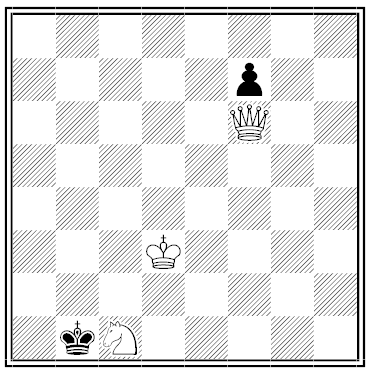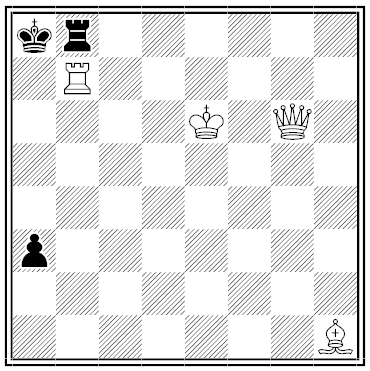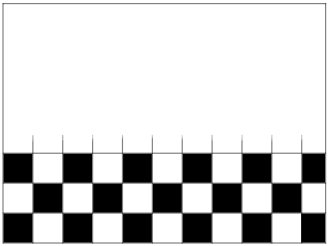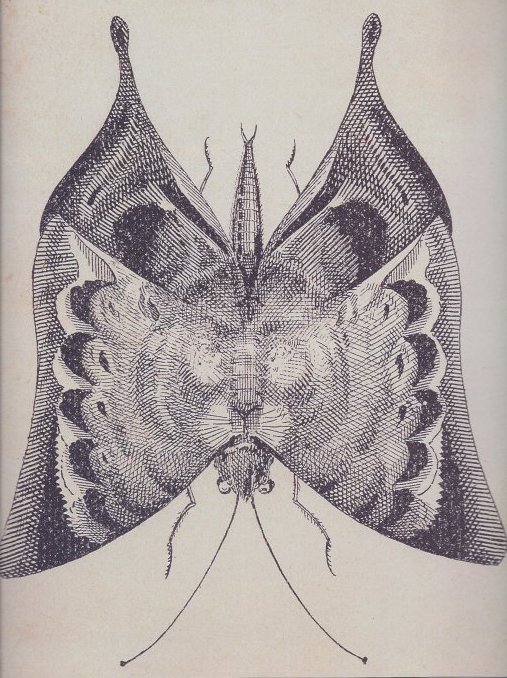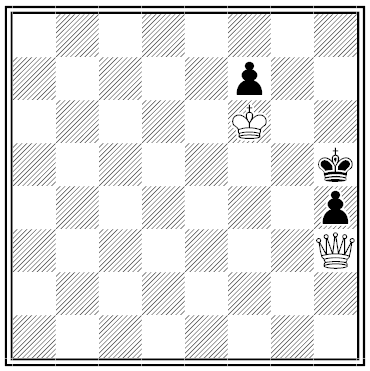Puzzles
Black and White
Gaining Ground
Puzzle maven David Singmaster presented this conundrum at the first Gathering for Gardner:
My daughter Jessica is 16 and very conscious of her age. Our neighbour Helen is just 8, and I teased Jessica by saying, ‘Seven years ago, you were 9 times as old as Helen; six years ago, you were 5 times her age; four years ago, you were 3 times her age; and now you are only twice her age. If you are not careful, soon you’ll be the same age!’
Jessica seemed a bit worried, and went off muttering. I saw her doing a lot of scribbling.
The next day, she said to me, ‘Dad, that’s just the limit! By the way, did you ever consider when I would be half as old as Helen?’ Now it was my turn to be worried, and I began muttering — ‘That can’t be, you’re always older than Helen.’
‘Don’t be so positive,’ said Jessica, as she stomped off to school.
Can you help me out?
He withheld the answer, but I think I see it.
Oedipus Wrecked
Jocasta Jones is walking in a wood when she discovers a deep freeze containing a man. She thaws him out, and he introduces himself as Dum and shows her a book that explains how to build a time machine and a deep freeze.
Jocasta and Dum marry and produce a baby, whom they name Dee. Dee grows up, discovers the book, builds a time machine and gets inside, taking his father and the book with him. The journey into the past takes a long time, and Dee is forced to kill and eat his father to stay alive.
Wracked with guilt, he emerges at his destination and destroys the machine. He changes his name to Dum, but still fearful of being punished, he builds a deep freeze and gets inside, taking the book with him. He is awakened by Jocasta.
Now, asks University of Nottingham philosopher Jonathan Harrison, “Did Jocasta commit a logically possible crime?” From her perspective, Dum enters her life, they have a child, and husband and child both disappear. But from Dee’s perspective, she has married her son and borne a child. Is this incest?
(Harrison, J. (1979) “Jocasta’s crime”, Analysis 39, 65.)
Black and White
Pride of Place
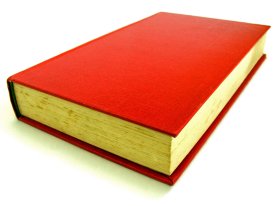
If we made a dictionary of all the integers, arranging their English names in alphabetical order, which would come first and which last?
Boxing Match

A large rectangle is partitioned into smaller rectangles, each of which has either integer height or integer width (or both). Prove that the large rectangle itself must have integer height or integer width.
“Cherchez Le Tigre!”
Black and White
One of a Kind

You’re about to roll five regular dice. Which is more likely, rolling no sixes or rolling exactly one six?

